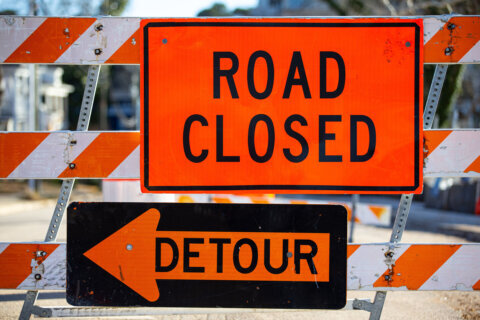After months of tracking coronavirus metrics, many states have seen so-called spikes, which are often due to a slew of positive tests being reported on a single day. In Delaware’s case, that data fluctuation landed the coastal state on D.C.’s high-risk travel list, which the City of Rehoboth mayor said diverted end-of-summer visitors.
A source within D.C. Health acknowledged to WTOP the data collected on Delaware’s seven-day average positivity was an anomaly but said that the District had no plans to pull Delaware off the list.
When D.C. Health staff pulled COVID-19 metrics from Delaware to assess whether it was safe for residents to travel there, Delaware was showing a seven-day average positivity rate of 11%, after a large reporting day on Aug. 14, the source said. Currently, it is at 4.2%, according to state data.
“There is a natural fluctuation, even with seven-day averages, but, in this case, there was a very large fluctuation right when we pulled the data,” the source at DC Health told WTOP.
“It’s very bad timing,” said City of Rehoboth Mayor Paul Kuhns.
With two weeks left of summer, Kuhns said that Delaware landing on D.C.’s high-risk travel list all but snuffs small businesses’ last shot at summer tourism dollars during the long, upcoming Labor Day weekend.
“We’ve had a lot of people cancel their reservations for rentals or hotels, or a lot of people who own second homes here in Rehoboth have decided not to come. And that affects all of the retail businesses, whether it’s restaurants or retail shops,” Kuhns said.
Anyone coming into the District from a high-risk state is being told to self-quarantine for 14 days due to the coronavirus pandemic. D.C.’s list will be updated again Sept. 7, which is Labor Day.
- Sign up for WTOP alerts
- Latest coronavirus test results in DC, Maryland and Virginia
- Fall school plans for DC, Maryland, Virginia systems during coronavirus
- Montgomery County schools will stop offering free meals to all students
- Loudoun Co. man pleads guilty in $1M coronavirus loan fraud scheme
- Virginia regulators extend freeze on utility shut-offs until Sept. 16
- Looking for more information? D.C., Maryland and Virginia are each releasing more data every day. Visit their official sites here: Virginia | Maryland | D.C.
However, despite the high reporting day, D.C. is not considering changing the list until it revisits travel metrics in two weeks.
“We would be setting a precedent if we change how we are measuring states or make exceptions for anomalies like this, and open the door for people to complain about states being on or off the list for any given two-week period,” the source said on background.
From time to time, Delaware enters old cases into the system so health officers have an idea of the cumulative total, even though the cases occurred before the seven-day moving average, said Delaware Gov. John Carney.
“Delaware is not a high-risk state — according to D.C.’s own criteria. Last week, our health team input historical cases into Delaware’s database. Those cases are at least several weeks old, and not representative of the current trend in Delaware. Frankly, using that data to impose a quarantine is frustrating and needlessly distracting,” Carney’s office said in a statement.
Carney said he has had a number of difficult conversations with the governors of New Jersey, Connecticut and New York — states that also have listed Delaware on their high-risk lists off and on throughout the pandemic.
“We’d tell them that the methodology you’re using is flawed; and therefore, you’re coming up with a calculation that completely misrepresents the number of new positive cases on a moving seven-day average,” Carney said during a news conference Tuesday.








